Hotel Copywriting
Hotel Copywriting Examples That Make Me Want To Book a Room
Your website is the face of your hotel business. You probably already invest a lot of budget into photography, but your words shouldn't be an afterthought. That's why I decided to gather a few hotel copywriting examples that really get it right.
Think about your own experiences as a consumer. How often do you make a quick assumption about a brand or business, after a quick glance at their website? When was the last time a brand really "spoke" to you?
Not to age myself, but I've been around the hotel business for a while. I’ve seen my fair share of the same hotel copywriting mistakes over and over — spelling errors, weak calls-to-action, cheesy buzzwords, ugh.
You have a five-star experience to offer, don't you? So why isn't your website copy just as captivating, original, and enticing as your hotel?
Thing is, there are a few specific elements that really add up to strong travel copywriting. I’m about to share a few hotel copywriting examples that make ME want to bust out my credit card and book a room — like, right now! Let me show you exactly what I mean.
Note: As of writing, the major story of the day is still coronavirus and its impact on the hotel industry. I’ve just published a new article about hotel recovery strategy and reopening marketing plans, so be sure to give that a read! In the interest of continuing to provide value during these strange times, I’m still writing about non-coronavirus hotel marketing topics but you can view all of my COVID-19 specific blog posts here. Thanks for reading!

Hotel copywriting examples with captivating & descriptive language
1. Mr and Ms Smith
While not a specific property, Mr and Mrs Smith is a hotel collection that really nails their copywriting.
Travelers often try to visualize ourselves on vacation long before we arrive. We try to imagine what these new surroundings will look like, what they’ll smell like and how we’ll feel once we’re there.
For Mr and Mrs Smith, they also have the unique challenge of volume — there are literally thousands of hotels on their website, so there’s simply no room to waste on long-winded, flowery descriptions.
So how do you capture the vibe of a place in under ten words?
Mr and Ms Smith teaches a master class on doing exactly this. Just look at these three examples of hotel copywriting:
Mr and Mrs Smith are doing a whole lot with very few words here. The succinct, yet evocative language gives the viewer a quick, yet impactful glimpse into each destination.
“Sand-dusted serenity,” “Georgian country estate,” “Bright lights, full bellies.” Swoon.
These three hotels couldn’t be more different. Mr and Mrs Smith uses good writing and thoughtful, precise adjectives to describe very different environments.
Copy like this is absolutely captivating. I want to more — I must know more!
And that right there is the number-one trick to getting more direct bookings: Keeping customers on your website, turning them from holiday window shoppers into happy, excited customers.
2. BelmonD HOTELS
While they have plenty of individual hotels to highlight, I want to point out what I think Belmond does really well as a hotel group: They transport you into the actual experience of each property.
From the moment you land on their homepage, Belmond gives you with endless possibilities.
One of my favorite features is actually just a search function. Belmond opted to create a much more engaging way to discover their hotel properties and other travel experiences, Choose Your Own Adventure-style.

As you explore the individual hotel and destination pages, you’ll notice the website itself feels like a lush travel magazine — on purpose.
Everything from Belmond’s page titles and subheadings to their blog posts is written in a deliberately “editorial” way.
There’s nothing bog-standard about it. And not unlike Mr and Mrs Smith, Belmond uses copy to transport their website visitors into each destination and experience.
I mean, honestly, who wouldn’t want to catch the “First Rays at Machu Picchu” or “Head to Deia’s Sparking Shoes for Creative Inspiration?” 😍
3. The NeD Hotel, London
Personally, I’m a complete sucker for Gatsby vibes and converted old buildings, so The Ned in London ticks a whole lot of boxes for me.
Their website is also packed with excellent hotel copywriting examples.
Particularly, the hotel plays fast and loose with typical room naming and descriptive conventions to embrace some of the more “quirky” elements that go with a restored, historic building.
The Ned’s room descriptions are notable, not only for the atypical names but for the way the hotel presents more “challenging” quirks of the building as selling points.
Case in point: How intriguing do those “Stairwell Studios” sound? And who among us hasn’t needed a “Crash Pad” after “impromptu plans” take hold…
Historic hotels often struggle with managing customer expectations when it comes to room size and shape.
Built in the 1930s as the former Midland Bank building, The Ned is no exception. When describing their smallest room type, the “Cosy” room, the hotel opts to draw attention to added value from amenities like their Ned’s Club Gym & Spa.
The Ned’s copywriting is truly on point. And that extends from their website over to social media. In fact, I talk about a few specific reasons why their captions work so well in my free hotel social media copywriting training!
Hotel copywriting examples with strong brand personality
On average, how many hotel websites do you look at before making a booking decision? If you’re like most consumers, the answer is: more than a few!
So as a hotelier, how are you going to set yourself apart from other properties? You need to show personality.
Clever, unexpected copywriting can bring brands to life and take a hotel website from a basic mess to a bookings machine! These hotels speak directly to their ideal guest using a strong brand personality.
4. W Atlanta — Downtown (*Client)
W Hotels, as a brand, exudes personality and fun vibes. But W also knows exactly who their brand is for, and their hotel websites are laser-focused on that ideal customer.
As a hotel copywriter, I appreciate any opportunity to play and get a little more creative with my writing. Needless to say, I was pumped to work on a website copy refresh for W Atlanta — Downtown!
Room and suite descriptions are definitely on the playful side here.
The Meetings & Events section was also punched up with a bit more brand personality. While this is a pretty ho-hum corner of most hotel websites, W gives you a glimpse into what it really feels like to hold an event here, mentioning specific (and on-brand) uses for their different function spaces.
Even the lobby gets a little love. W’s “Living Room” lobby lounge concept is a great experience, so we played up what it’s like to use that particular area: “[it] works just as well for pre-drinks as prepping for your next big meeting.”
It’s really challenging for many hotels to get clear on who their target audience actually is. I’ve seen a lot of hotel websites that feel scattered, cluttered, or just plain confusing because of this. (Psst… that’s also one of the worst hotel copywriting mistakes you can make.)
Atlanta is a popular U.S. city with a lot for tourists to see and do, but the downtown area is also an important business hub. For W Atlanta — Downtown, it was important for us to find a balance between the casual and professional, but we kept the brand personality alive throughout.
5. The Dean Hotel, Dublin
This trendy Dublin hotel screams personality and style. In fact, The Dean Hotel tells you what to expect the moment you land on their site: “We don’t do conventional. We do fun.”
The Dean’s website features quite a few other examples of clever hotel copywriting that’s packed with personality.
There’s the bold welcome statement on the very first page.
There’s also a pop-up that appears if you start navigating away from your browser tab. Rather than let this be dull, their copy highlights the perks of booking direct in a playful, approachable way.
Then there’s the use of informal language used around the website, like “We’ll always have the sweetest rate.”
Take note of the way they describe their guest rooms as having “big, bouncy beds” and “super soft linens.” The Dean is speaking conversationally to their target guest here — and I love it!
Good copy needs to evoke some sort of feeling or response. Not only does the Dean’s leave you feeling welcomed but I get the sense that their guests have a damn good time at their property. As they clearly state, an “unconventional” experience awaits.
Hotel copywriting examples with catchy calls-to-action
Your calls-to-action (CTAs) are short snippets of copy designed to get users to take action.
For a hotel, that action can be a number of things: Book a room, request an event proposal, make a restaurant reservation, browse our local destination guide, view our menu or floorplans…
Some of those might sound “small” but really, every little action a user takes on your hotel website gets them one step closer to generating sales for you.
That’s why CTAs are vital to include on any hotel website as they give direction to those prospective customers. Without direction or instruction, visitors to your website may be inclined to click out. Here are some examples from hotels that get this oh-so-right.
6. The Proper Hotel, Austin
It is evident that The Proper Hotel, Austin has a distinctive style from the moment you land on the homepage.
Elegant branding isn’t the only thing that’s special about this luxurious property. They are clearly trying to stay away from “typical” copy — one place I really noticed this is in the calls-to-action (CTAs) used around their website.
Strong CTAs are a foundational component of any good hotel website, but let’s be honest: “Book Now” and “Learn More” are not all that exciting.
CTAs don’t have to be dull. The Proper’s choice of words speak directly to the reader, and in the context of what they are browsing in that specific moment. Let’s look at three examples:
First, there’s a content block previewing their Rooms & Suites section. After the browser skims a quick description of the design inspiration, their call-to-action is clear: “Be Our Guest.”
Next, one of my favorite hotel copywriting examples is just these two little words on their homepage Eat & Drink content block: “I’m Hungry.”
Short, specific, and oh-so effective!
Finally, the other example I want to highlight from The Proper is on their Offers page. The CTA “Reclaim Summer” is used to draw the reader into that specific package, and honestly? Given the current state of the world, reclaiming my summer sounds pretty great right about now.
7. Saratoga Arms (*CLIENT)
This stunning, boutique bed-and-breakfast hotel does a fantastic job at balancing their upscale offering with a warm, welcoming vibe. As they should — Saratoga Arms is a family-owned and operated local business, serving the Saratoga Springs area for two generations.
(Full disclosure, I’ve also been working with this hotel on a number of copywriting and blogging projects!)
This hotel does a great job of using content to keep browsers on their website, but there are two things I want to highlight in particular:
Within the website footer is a call-to-action to subscribe to their emails. Instead of your standard “Subscribe to our newsletter” CTA (yawn), I worked with Saratoga Arms to create a hotel lead magnet for them.
Lead magnets are an exclusive piece of content that your audience wants or needs. In this case, it’s an in-depth destination guide, packed with insider tips from the hotel owners (lifelong residents!) and valuable recommendations for things to do in Saratoga Springs based on different traveler interests.
Another bit of copywriting that I love is on their Meetings overview page.
Again, this is a section that sometimes feels very dull and dry on most hotel websites. Saratoga Arms uses a few strategic messages on this page’s image slideshow: “When you want to reward your team” and “When you need to impress your stakeholders” are both great examples of hotel copy that speaks directly to the customer and their potential needs.
Notice that both CTAs also use action words — verbs — like “reward” and “impress.”
Overall, Saratoga Arms has a welcoming, warm website, and they take care to make a lot of strategic choices with their CTAs.
Final Thoughts
If direct bookings are looking a bit stagnant and you’re not seeing those RFPs rolling in, your website might need a little copy refresh.
Using these hotel copywriting examples as a guide, here are some quick takeaways:
Use captivating and evocative language — you’re selling an experience, not just four walls and a bed!
Establish a clear brand identity, and let your personality shine through.
Use simple, striking calls-to-action on every page of your website — verbs are your friend.
Now that we’ve covered how to write effective hotel copy, don’t forget to brush up on what NOT to do. Here are the common hotel copywriting mistakes that could cost you bookings.
Effective hotel copywriting in 3 key steps
The power of great hotel copywriting on your website can’t be overstated. Far more than filling space on a page, the right words can spark the imagination of your potential guests, and move them one step closer to booking.
Persuasive copywriting can fire up your conversion rates by using the kind of language that differentiates you from the competition, and connects your brand with your audience.
While there are countless ways to upgrade the copy on your hotel website, the following three tips (with examples) are relatively easy to apply and can have a major impact.
Focus on the needs of your guests
The attention span of the typical online travel shopper is fleeting. So when they land on your homepage, your copy needs to instantly connect with them. To achieve this, a lot of hotel websites attempt to say everything in order to appeal to everyone. But it’s an approach rarely works.
The majority of your audience won’t be engaged by an exhaustive list of your top ten features. But they will be engaged if you focus on the amenities and attractions that they are most interested in.
At Cupertino Hotel in Silicon Valley, their website primarily targets business travelers, and it focuses on what the majority of this audience care about most: location and convenience.
The first section of copy on their homepage gives specific distances from the hotel to nearby airports and transport links.

There’s nothing fancy going on here, but this kind of simple information is exactly what a lot of business travelers will be interested in. Only further down the homepage does the copy then mention the hotel’s suites and services.
This is a perfect example of how the copy on your homepage should be built around the most relevant needs and desires of your target audience.
What does your own typical guest care about most? If this answer isn’t obvious, there are plenty of ways to find out. Check out your TripAdvisor reviews. Send out short post-stay surveys via email. Or simply ask your guests what they enjoyed most about their stay during check out.
Look for patterns. If a lot of your guests mention your chilled oceanside setting, your family-friendly facilities, or your funky rooftop bar, make these features the heart and soul of your copy.
Once you’ve grabbed the attention of your audience, you can use the rest of your website to list other attractive qualities to further reel them in.
Mastering your tone of voice
After deciding what to say, you need to work out how to say it. This is all about the art of crafting your tone of voice—an area that often gets rushed or completely overlooked.
However, the words you use on your website have real power. They can create a specific mood, conjure up vivid mental imagery, and completely change how your property is perceived.
Again, the key to success here is knowing your audience. A funky urban property targeting twenty-something backpackers might adopt a casual and punchy tone. Clearly that wouldn’t be right for a luxury boutique targeting an over-50s demographic.
At The Keys Collection hotels, most of their guests are looking for a chilled beachside getaway, so the copy reflects this. Their tone is laid-back and breezy. It uses sensory-rich language, built around a theme of escapism.

Phrases such as “let loose and break out of your shell” and “kick back and relax” are designed to speak to the beach-seeking vacationer. Based on the mindset of this hotel’s typical guest, this kind of light, casual phrasing is perfect.
In contrast, Moxy Hotels use a fun, playful tone to connect with its Millennial audience.

The homepage of their Times Square hotel describes the property as a “launch pad” and “your ultimate playground,” while their rooftop bar is described as “the biggest and baddest in NYC.”
As a general rule, it’s worth taking the time to create a distinctive tone of voice. Opting for a generic tone aimed at pleasing all can make you come off sounding bland, and it definitely won’t help you stand out from your competitors.
Focus on benefits, not features
When writing your copy, it’s important to consider a golden rule: your guests are interested in benefits, not features. So while it might be tempting to describe all the great things about your hotel (features), people only care how these will enhance their experience.
Remember, consumer purchases are always driven by one question: “What’s in this for me?” And these purchases are often rooted in emotion. In fact, studies have shown that consumer decision-making is driven more by emotions than information.
So when you tell guests about benefits instead of features, you’re more likely to boost these emotionally-driven choices.
To help with this process, consider how your hotel’s standout features relate to an emotion or experience. At the Beach Terrace Inn in Carlsbad, they describe their exotic location in a way that invites the guest into the scene.

The example above uses a type of sensory-rich language designed to create specific scenes and moods:
“We cherish the “ahhh moments — those little instances where the distractions of the rest of the world are drowned out and you can finally relax — like that moment when you first hear the waves of the Pacific, or the moment you first feel the sand in your toes …”
The choice of language here subtly shifts the emphasis towards the guest. Rather than simply describing the location, it places the reader at the heart of the scene.
If you want to turn features into benefits, simply think about things from your guest’s perspective. To further illustrate this point, the following example shows how a feature can be translated into a benefit:
Feature: Our family-friendly hotel has a huge kids’ water park.
Benefit: Busy parents can unwind and put their feet up while their kids have a great time in the pool.
When the feature is turned into a benefit, the copy could be written like this:
“Kick back with an ice-cold drink from a poolside lounger while the kids splash around in our giant water park. Ear-to-ear grins all around … guaranteed!”
You don’t want to overdo these kind of descriptions, but used sparingly, they can have real impact. Especially on your homepage.
Obviously, there are parts of your website where listing features is more appropriate, such as your Rooms page. At this point, you can assume users are interested in your property and moving closer to making a booking with you.
Great copywriting drives conversions
Great hotel copywriting helps you connect with your guests by tapping into their needs and preferences. It has the power to spark their imagination, distinguish you from the competition, and ultimately—drive bookings.
Before writing a word, it’s essential to know who your audience is, and what kind of experience they’re looking for. Based on this, you can focus your messaging on their needs and desires to really capture their interest.
Creating a tone of voice based on your target audience will help you connect with them more effectively, using a style of language that truly resonates with them. Finally, think about how your best features can be described in terms of guest-orientated benefits.
By applying these three tactics, your hotel website will be far more likely to inspire and engage your target audience, increasing your direct bookings as a result.
Copywriter for Hotels, Condo-Hotels and Resorts
Well-Crafted Hospitality Copywriting Attracts Customers
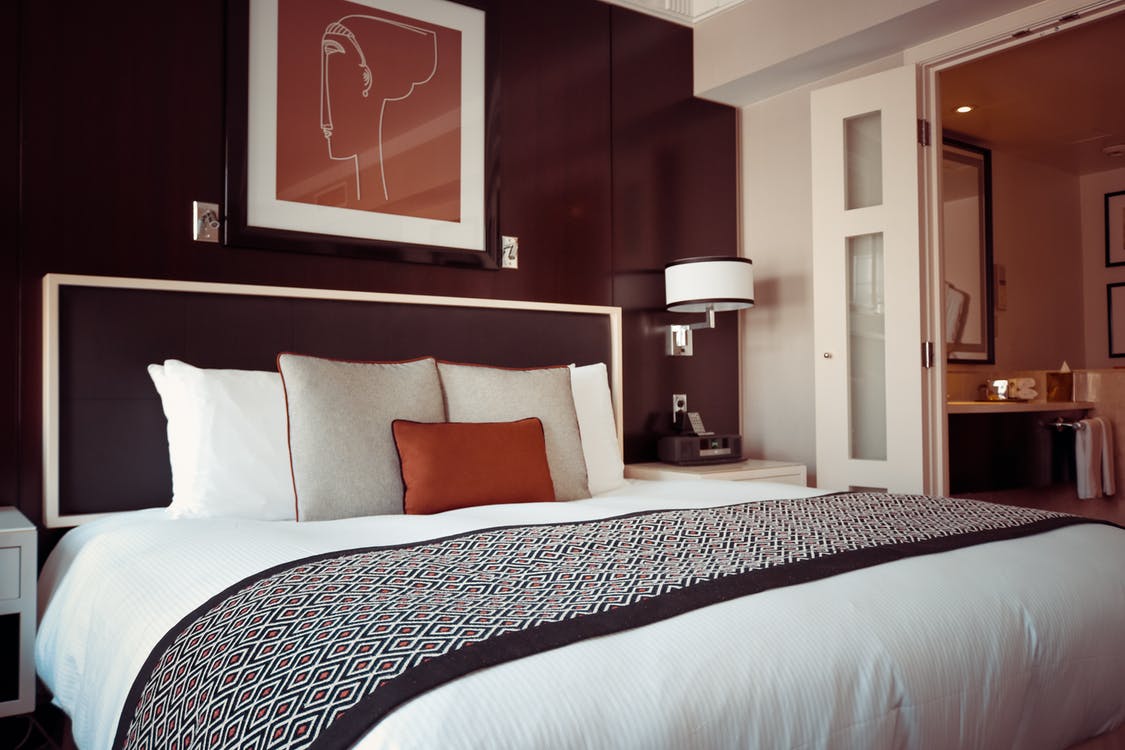
If you’re not operating at near-full capacity most days, you need to consider increasing your marketing efforts.
Seeking a professional copywriter to write your website, brochure or other marketing materials? Request a project quote here.
You have a beautiful hotel or resort property. It has impressive amenities, upscale services and a prime location. But most days, you’re not at full occupancy. Whether you’re a mom-and-pop motel or a five-star resort on the beach, every vacant room is still money lost.
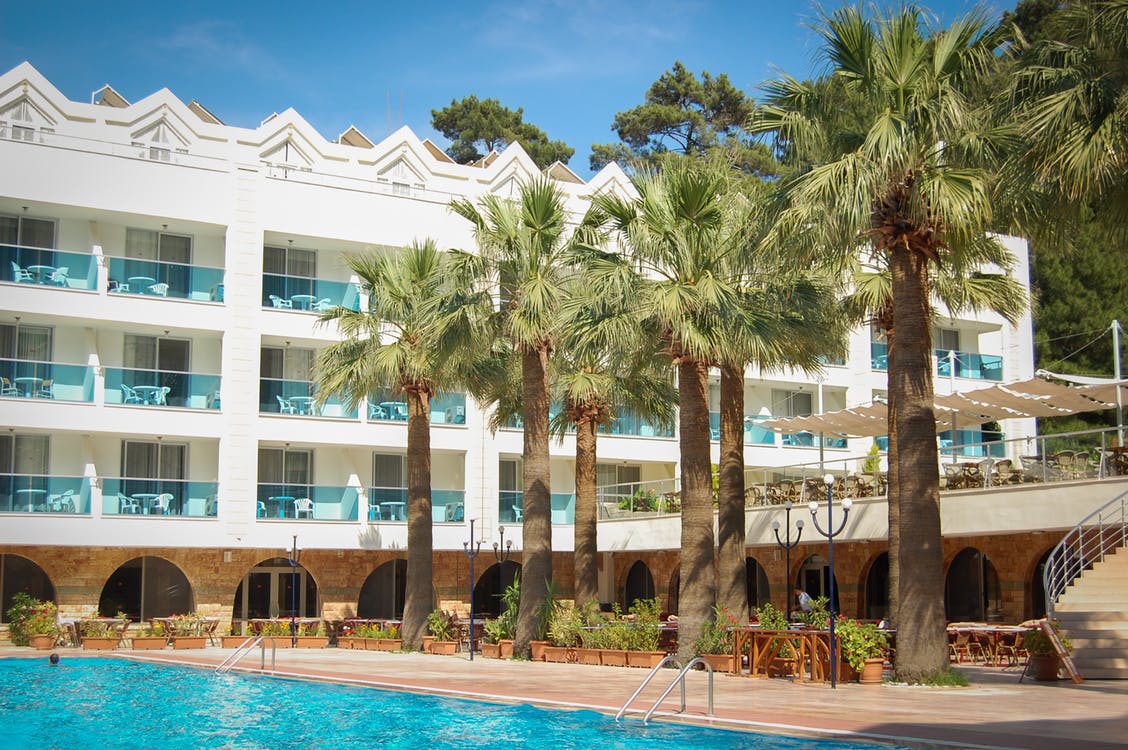
A marketing copywriter can create content that differentiates your property from the competitions’.
You need more marketing exposure, but you’re just not sure what to do. A marketing copywriter who has experience writing about hotels, condo hotels and resorts can help you take your marketing up a notch with a variety of print and digital promotional materials.
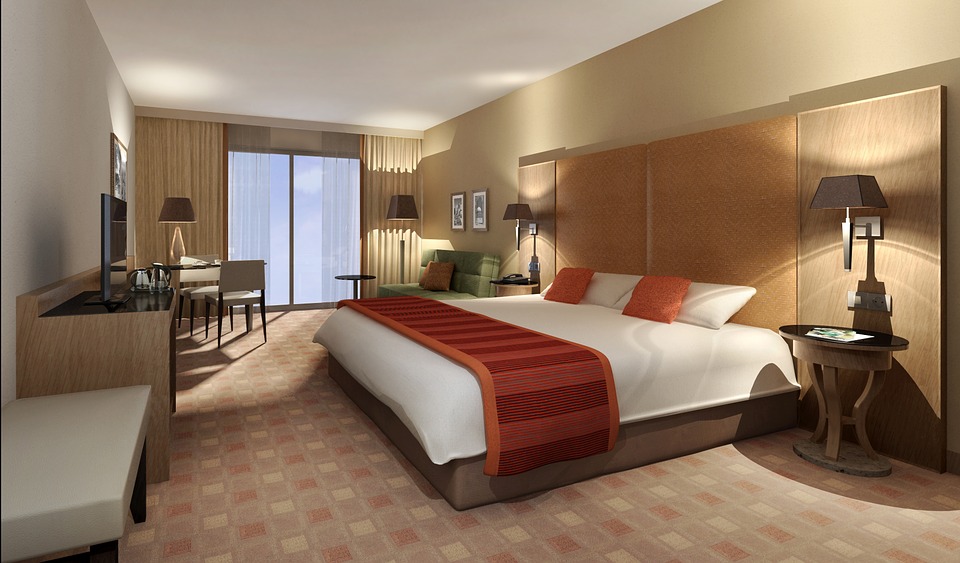
A quality website combined with social media posts and favorable reviews will give your hotel a successful online presence.
- Website – Most customers check out a hotel or resort online before making a reservation. Your online presence, in both design and copywriting, needs to reflect the quality of your property and its level of service. A recent hotel survey by Statistica found that 88% of people said they prefer using an online channel to book a hotel. So if your online presentation isn’t on point, you’re missing out on new business.
- Brochure – Printed materials can be mailed out or left behind at an appointment. They’re ideal for promoting your hotel to convention groups.
- Sales Letters – Contact groups and associations that might need hotel or meeting facilities in your area. In your sales letters, explain how you goes over and above to create successful events.
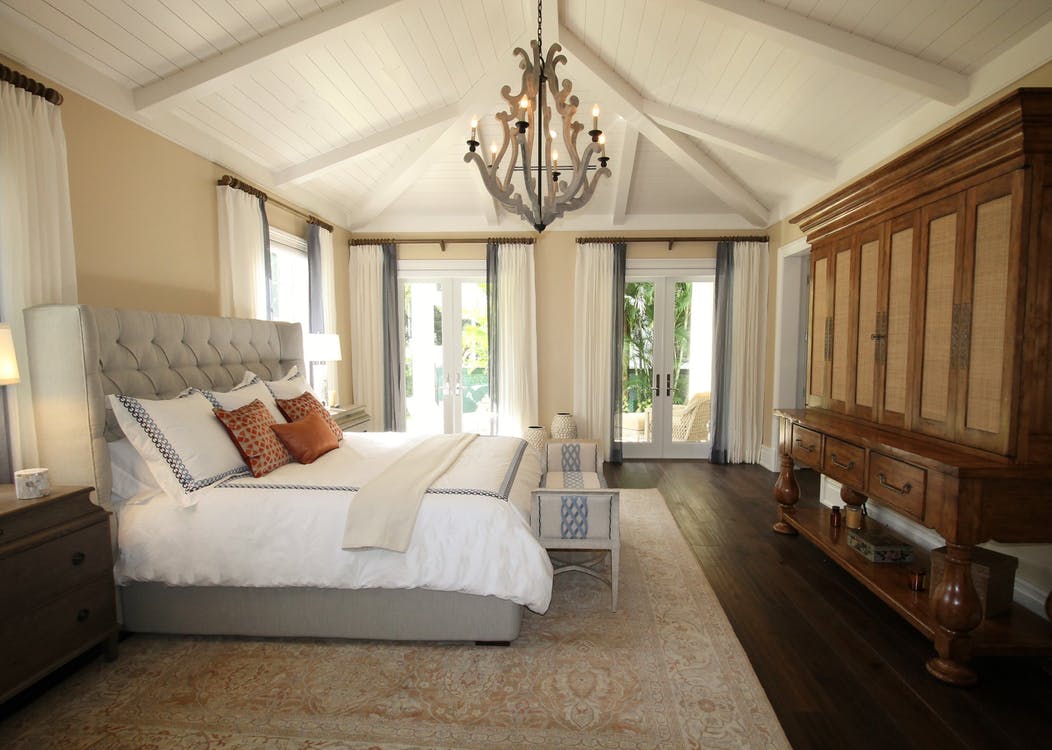
Be sure copy about your hotel mentions what makes it unique and special.
- Online Directories – List your hotel or resort in online directories. Make sure your profile is well-written and includes photos. And don’t forget to update your listing periodically. Add any expansions, improvements or new services.
- Review Sites – When people shop for hotels, they read reviews. Write a profile on review sites to show off your property’s best features and encourage your guests to provide testimonials about their stays. Once you have some positive reviews, consider adding them to your website. “Testimonials from real hotel guests are incredibly impactful,” according to Five Star Content in an article about marketing hotels. “The best hotel websites show real reviews from trusted third-party sources like TripAdvisor and Google.”
- Social Media – Facebook, Instagram, Twitter, LinkedIn and YouTube all offer opportunities to get your name in front of prospects and stay top of mind. Keep your followers apprised of special events, special promotional rates, groups staying at your hotel, entertainment, new features and amenities, restaurant offerings, contests and more. Add written posts as well as photos and videos when possible.

When you invest in professional copywriting, you enhance your visibility and build your brand.
Competition Between Hotels Is Intense
The hospitality industry is extremely competitive. Consider these recent statistics:
In 2019, there were over 700,000 hotels and resorts worldwide. (Source: https://www.condorferries.co.uk/hotel-industry-statistics)
Prior to the 2020 COVID-19 pandemic, the hotel industry was thriving and worth over $570 billion. (Source: https://www.condorferries.co.uk/hotel-industry-statistics)
There are over 91,000 hotels and motels in the US, generating over $194 billion a year according to IBISWorld. (Source: https://www.condorferries.co.uk/hotel-industry-statistics)
There are over 700,000 hotels and resorts worldwide. (Source: https://www.condorferries.co.uk/hotel-industry-statistics)
The leading group in the world is the Wyndham Hotel Group with over 9157 properties. Followed by Choice Hotels International which have over 7,045 and Marriot International with 7,003. (Source: https://www.condorferries.co.uk/hotel-industry-statistics)
Boost Your Occupancy Rates
As the statistics reveal, customers have plenty of choices when it comes to hotels. You need a way to make your property stand out if you want to be consistently successful.
When you invest in professional copywriting, you’ll accomplish multiple marketing objectives. The right words can:
- Enhance your visibility
- Build your brand
- Increase occupancy rates
- Attract better customers who spend more
- Generate more revenue
- Add to the total value of your property (critical should you ever decide to sell it)
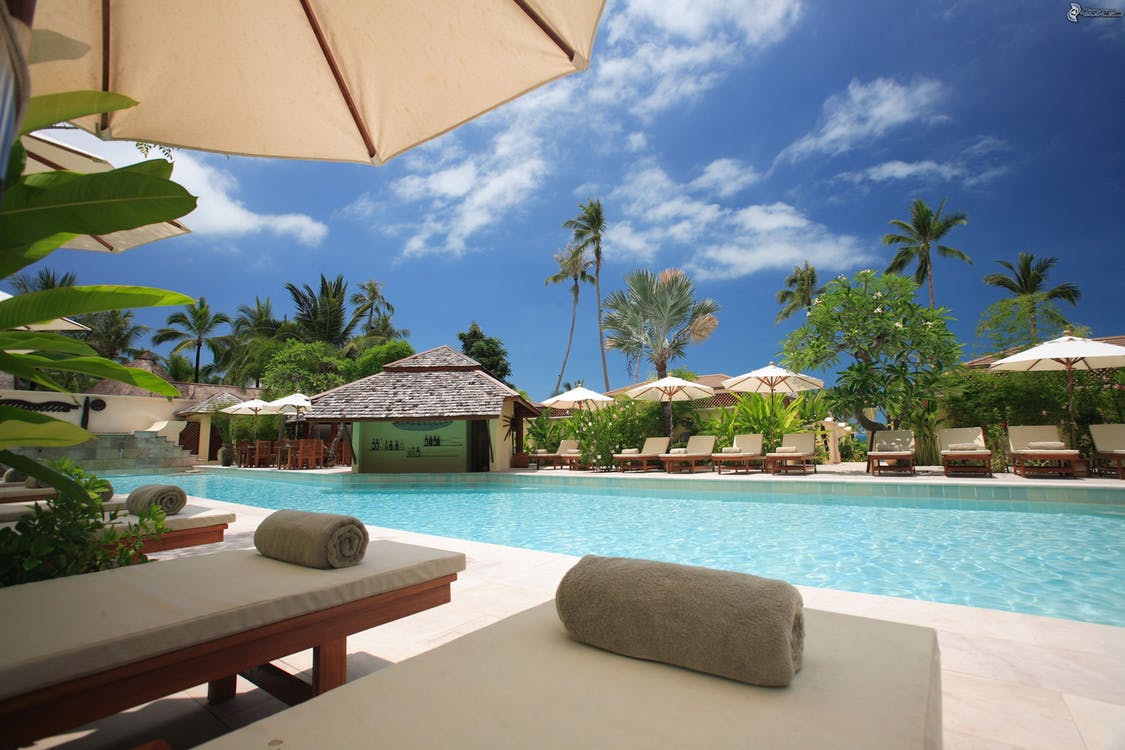
Improve your resort’s prominence with well-crafted written content both online and in print.
If what you’re currently doing for marketing isn’t working or perhaps you’re ready to increase your exposure, contact a hotel/resort copywriter and explore all the exciting possibilities.
As hotel marketers, you create content to inform, to engage, to attract traffic, to build brand awareness and to show off your property as well as your local destination. But most of all, you create content with one ultimate goal in mind: to convert browsers to customers. In order to do so, you need copy that sells. And above all, you need it on your website, which – if you’ve been doing things right – should be where your potential customers wind up when they are on the brink of making a decision to purchase.
These days, consumers are extremely sophisticated and are wise to manipulative sales tactics. They will run a mile from anything that seems overtly salesy, over-the-top or high-pressure (e.g. “Don’t miss out on the opportunity of a lifetime!”). Which means, we need to take a different tack. Let’s take a look at some of the key ways to create straightforward hotel sales copy that can convince potential guests to book a stay.
Stay simple
When it comes to persuading potential guests through the medium of copy, remember that simplicity sells. In this busy, choice-filled world, information overload is all too common. Customers yearn for things that are uncomplicated.
Being straightforward is not as easy as it sounds. As a hotel marketer, you may want to make sure browsers are aware of all the bells and whistles on offer. You are, however, better off keeping that stuff off your homepage. Instead, reel them in with streamlined sales copy that covers only the most important points. Don’t lose your essential message in a deluge of descriptions.
The Pig, a mini-chain of rural UK-set shabby-chic hotels, does this excellently with its clever strap line: “It’s really just a restaurant with rooms.” In one simple sentence, they manage to convey some of the most appealing aspects of their brand: their hotels are unstuffy, down-to-earth and cosy country haunts with on-site restaurants that take centre stage.
Brag about the biggest benefits
Features tell, benefits sell. It’s an advertising cliché that, like most clichés, has more than a grain of truth to it. Make sure you shout about your biggest benefits.
Over on The Cosmopolitan of Las Vegas website, they give the benefit of their on-site amenities top billing. But rather than listing them (a casino, nightclub and multiple dining and drinking venues to name but a few) on their homepage, they instead employ a short, pithy phrase that explains the overall benefit their facilities have for customers: “Play where you stay.”
Prove your worth
After boasting about your biggest benefits, the reader is likely to be somewhat sceptical. Why should they believe you? Now is the time to provide some evidence to back up your big claims. Show your muscle with some meaty statistics, rave reviews or something else that demonstrates that your hotel is all that it says it is. You could use customer comments to substantiate your claims, or as the Pig Hotel does, let your customers do the talking via their Instagram posts.
You may want to hint to prospective customers just what they will be missing out on if they don’t choose your hotel. You don’t want to be too hyperbolic, but it’s okay to make them feel a little twinge of FOMO (Fear of Missing Out). You don’t have to slate the competition, but it also helps to hint to customers how your brand is different, and ultimately better, than competitors. Once again, The Pig does this well: “There is no predictability… this is no ‘cookie-cutter roll-out’. We have turned the traditional layout of a hotel on its head!”
Call to action
The final, invaluable step in successful sales copy is to prompt the reader into action. Your call to action(s) should be prominent, preferably set apart from the rest of the text on an impossible-to-miss clickable button. In terms of sales copy, this is not the time for subtlety nor for complex language. Make the call-to-action copy clear, direct and obvious so the user knows what they can expect by clicking on it. Use an action verb to help amp up the urgency: “Book now”, “Reserve a room”, “Check availability”.
Of course, sales copy isn’t a one-stop-shop miracle solution. It is just one element in a complex web of content marketing. However, if you have built your brand awareness and secured web traffic elsewhere, it’s this kind of copy that can be the final, crucial piece of the jigsaw, converting prospective customers into real – paying – ones.
When copywriting for hotels, word choice is everything. You can show nice photos of well-made beds, sparkling sinks and a deep blue pool open to swimmers under the moonlight – but hotels are one industry where pictures just don’t tell the whole story. Is it a business-friendly hotel, with a quiet atmosphere and well-equipped conference rooms? Can the restaurant satisfy large groups with high-quality meals? Is it in an accessible location with lots of transport links and fast wi-fi?
Or perhaps it’s a family hotel instead, where games and activities can entertain the kids both inside and outside the hotel grounds. The restaurant menus might each have a special section to treat the little ones, with toys, games and table tennis paddles available for rent from the front desk.
Or does that moonlit pool indicate a romantic getaway instead? Or a tropical beach resort? A family-run local hotel or a proud new member of a giant hotel chain?
In their everyday lives, people might not spend a lot of time deciding what to eat for dinner, or where to buy a new shirt. But they’ll take the time to research their accommodation, and most people have a particular preference in mind when they begin. This is why having the right style of text on your website, and the right digital marketing, can help those potential customers make decisions and help them decide if your hotel is the right choice.
It can be hard to catch every kind of traveler with one description, unless your facilities are state-of-the-art and your price is truly a bargain. If you try, you might find that the only words your hotel copywriting team can use to describe you are boring ones: “A great experience!” “Delicious food!” But people see descriptions like that all the time, no matter what is being sold. If you are going to stand out – if you expect people to choose you instead of the others – you will need to write better than that.
To escape that trap, you need to make a choice. Ask yourself: Who is your true audience? What kind of voice, and personality, do you want to use to communicate to that audience? What does your hotel really do better than its competitors? What are its best features?
You have to know exactly who you are, and who you aren’t. And write with the words that your audience wants to see when they are looking for a hotel. Are you a business hotel? Your Bangkok copywriting firm should use business language. It should write about convenience, and about your transport connections. Your ability to handle large groups at the reservations desk, the restaurant and the conference room. It should show confidence. Style. Professionalism. Comfort. Functionality.
If you’re writing for families, a reader should learn that there’s fun around every corner – and the website should be written with an air of excitement, so that parents can show your homepage to their kids to get them enthusiastic about coming. Game zones, costume parties, playgrounds and swimming adventures, scavenger hunts — all of these and more can be described in detail to show kids that your hotel is a paradise for having fun.
If your audience is couples, a good copywriter for hotels would describe in attractive detail some of the quieter things to do in that setting. The feeling of taking that slow nature walk between the trees in the secluded area behind the hotel. The spa and all of its sensual delights. The soft beds and fresh flowers placed in each room.
Your hotel might aim for two different types of guests: Backpackers and world-travelers, for example, or casino-lovers and upper-class connoisseurs of luxury. Whatever that target audience is, it likely has its own language. Its own stories to tell. Its own problems and wishes. Your job is to speak that language. Just make sure you make time for careful editing and proofreading before you publish anything, or you might risk losing the effect of quality writing in occasional typos and poor word choice.
If your audience is couples, a good copywriter for hotels would describe in attractive detail some of the quieter things to do in that setting. The feeling of taking that slow nature walk between the trees in the secluded area behind the hotel. The spa and all of its sensual delights. The soft beds and fresh flowers placed in each room.
Your hotel might aim for two different types of guests: Backpackers and world-travelers, for example, or casino-lovers and upper-class connoisseurs of luxury. Whatever that target audience is, it likely has its own language. Its own stories to tell. Its own problems and wishes. Your job is to speak that language. Just make sure you make time for careful editing and proofreading before you publish anything, or you might risk losing the effect of quality writing in occasional typos and poor word choice.






















Comments
Post a Comment